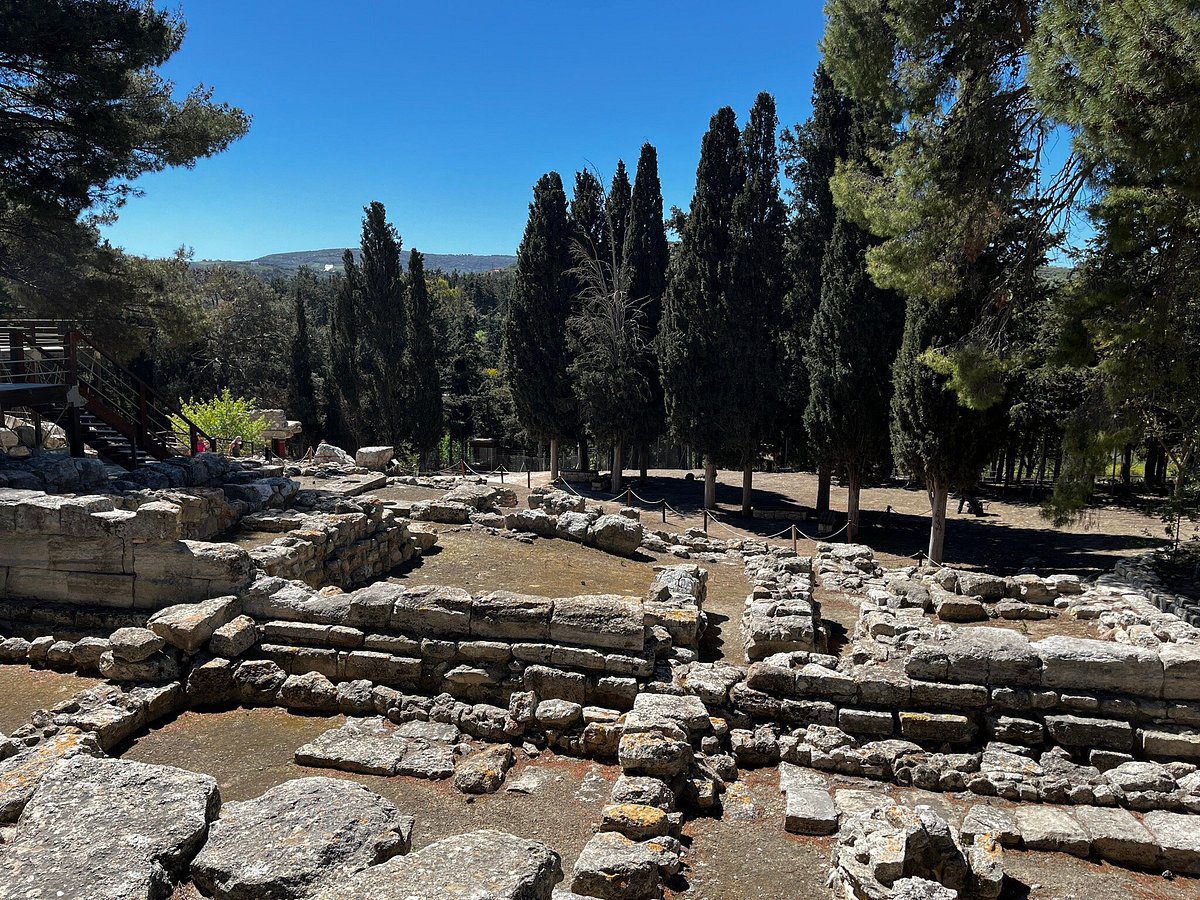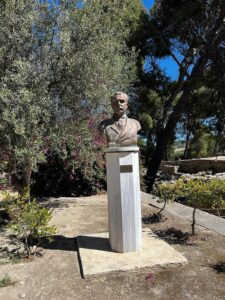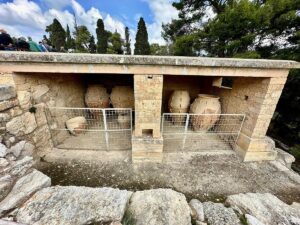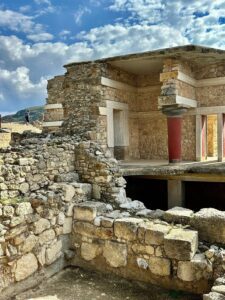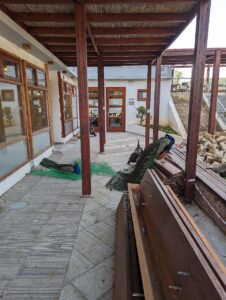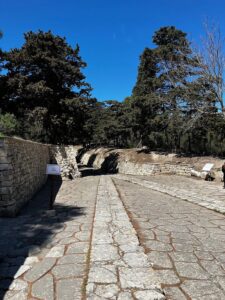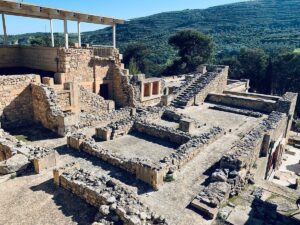Description
The Palace of Knossos, located near Heraklion on the island of Crete, Greece, is one of the most significant and well-preserved archaeological sites of the ancient Minoan civilization. Dating back to the Late Bronze Age, around 1900-1400 BCE, the palace is renowned for its intricate architectural design and vibrant frescoes, which offer a glimpse into the sophisticated society that once thrived on Crete.
The palace complex is notable for its expansive layout, featuring a labyrinthine arrangement of rooms, courtyards, and storerooms, all richly decorated with colourful frescoes depicting scenes of nature, bull-leaping, and ceremonial activities. The advanced construction techniques, including the use of multiple stories and complex drainage systems, reflect the palace’s role as a major administrative and ceremonial centre. Key highlights of the site include the grand throne room, with its famous "Throne of Minos," and the large, open courtyards that were used for public and religious ceremonies.
For tourists, the Palace of Knossos offers a fascinating journey into ancient Minoan culture and architecture. Its location near Heraklion makes it easily accessible, and guided tours provide valuable insights into the palace’s historical significance and the daily life of its inhabitants. Whether you are interested in ancient history, archaeology, or exploring the impressive remains of a once-great civilization, the Palace of Knossos provides a captivating and educational experience that highlights the cultural and historical heritage of ancient Crete.
Location
-
Knossos 714 09, Greece
